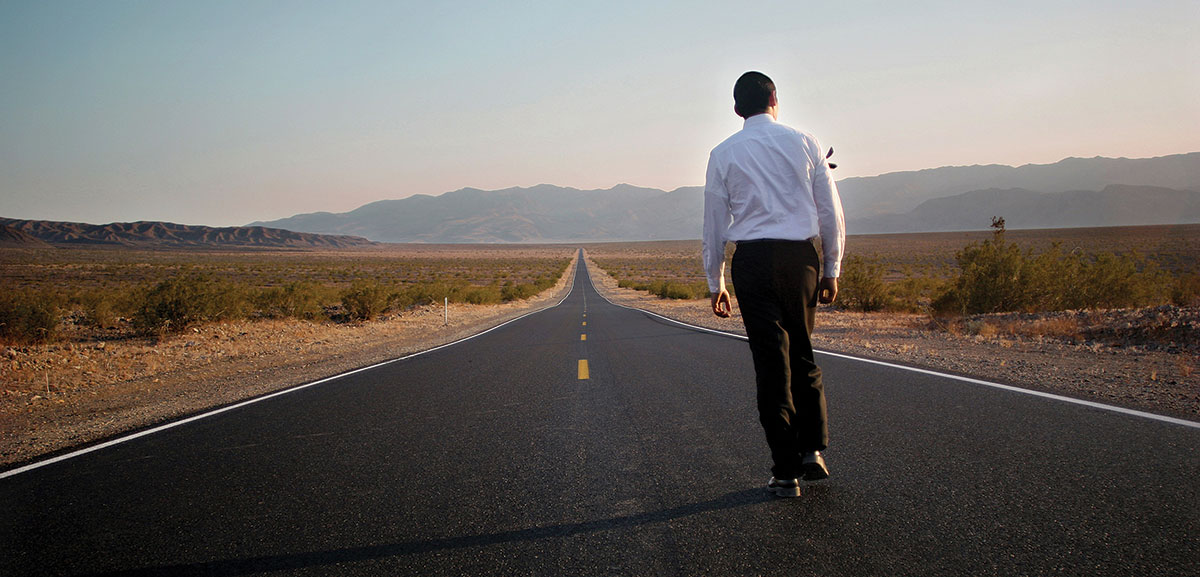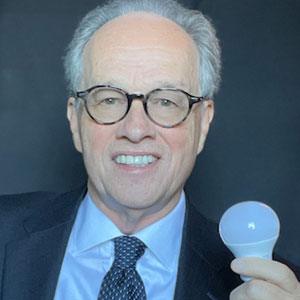A look at exterior lighting’s most likely avenues for growth
By Mark Lien
 Before we charge into the future, I would like to say that’s there is a lot to praise about our industry’s efforts in transforming exterior lighting and some valid criticism that we should own up to. The efficiency of exterior luminaires led the SSL revolution and increased LED source efficacy from about 20 lumens per watt a decade ago to 10 times that now. DOE stats reveal that outdoor lighting continues to have much more rapid market saturation of LEDs than other segments and it also projects that 93% of outdoor lighting will be converted to LED by 2025. Regarding the criticism—we could have addressed light pollution sooner and better.
Before we charge into the future, I would like to say that’s there is a lot to praise about our industry’s efforts in transforming exterior lighting and some valid criticism that we should own up to. The efficiency of exterior luminaires led the SSL revolution and increased LED source efficacy from about 20 lumens per watt a decade ago to 10 times that now. DOE stats reveal that outdoor lighting continues to have much more rapid market saturation of LEDs than other segments and it also projects that 93% of outdoor lighting will be converted to LED by 2025. Regarding the criticism—we could have addressed light pollution sooner and better.
We did not do a great job of initially designing exterior lighting products in terms of efficiency or environmental effects. That aside, exterior lighting has evolved dramatically, and, finally, disparate concerned groups, including the IDA and National Park Service, are aligning with the IES to improve our nighttime environment. As we prepare for the next chapter in exterior lighting, the question is: Where do we go from here and what can we say with some level of certainty about the future?
First off, lighting will be connected into and through other devices. It is going to become one part of the electrical infrastructure in our cities and buildings. This is going to happen whether or not the innovation comes from within our existing lighting community or outside of it. Others poised to benefit from this shift are Internet, electronics, telecom and HVAC companies. They have a vested interest and some of them are learning to play well with our lighting community. Smart cities are also blazing the trail acting as test beds for protocols, interchangeability and interoperability (terms defined by ANSI C137).
With Samsung, Apple, Google, Verizon, Amazon, Trane and Honeywell becoming more embedded in the lighting community, it is likely that they will initially source their lighting from established lighting manufacturers enabling faster speed to market. Disintermediation, however, will ultimately force organic production either from scratch or acquisition. We should welcome these new players into the lighting community as they can make us stronger. Through building relationships with them we can help them understand the value of quality lighting products and applications.
Renewables will also play a role and kWh rates will fall. ASHRAE is addressing renewable energy in their standards. Some lighting ESCOs have transitioned to focusing almost exclusively on renewables. The U.S. Energy Information Administration in their 2021 Annual Energy Outlook forecasts that “renewable electricity generation increases more rapidly than overall electricity demand through 2050.” Now that LEDs are ubiquitous and energy costs are projected to fall, energy efficiency becomes less important for products. This is a logical progression. First, you make the products that consume the energy more efficient because that is faster and easier; then, we focus on how we generate the energy. For lighting, LEDs have matured to an efficacy and price point acceptable to the marketplace. There will be incremental gains but our work in the area of efficiency is mostly done.
There will also be more conversation about light and health and the risks and benefits of cooler light sources—the blue light mess. The problem with definitively resolving this is the inability to raise funding for the necessary research. There are organizations with research funds, including the IES, that can accept additional funding for specific goals from competing companies without anti trust implications, but overall, it has not been a priority for our industry. Proprietary progress is typically shortsighted for short-term gain. The proverb that states, “If you want to go fast go alone, if you want to go far go together,” applies. If we pool resources and work together then our entire lighting community benefits.
If we establish safe and healthy levels of intensity and spectral distribution then users will demand the lighting that is the safest and healthiest. That could be another revolution that grows our industry and improves our quality of life. Proprietary solutions can compromise consumer confidence by restricting the ability for products to connect and operate together. This opens the door for others to provide shared solutions that will dominate the future lighting market. The choice is to step up or step aside.
PNNL did a study in 2017 showing that controls for exterior lighting had a potential to save less than 1%. That will be a tough ROI to sell to end users unless they want the controls for some other purpose. Motion sensing in some outdoor applications looks more promising.
In addition, our products will get smaller. Dematerialization is the phase we are in now—it follows demonetization or cost reductions that have already occurred. Smaller products use less material and can better integrate into the electrical infrastructure of our built environments. Less material can result in manufacturing savings. I worked for one manufacturer that value engineered the reflector out of an exterior luminaire. They didn’t change the spec sheets and the minor savings ultimately cost them when the products underperformed. Designing new smaller versions and even nanotech can be done intelligently with consequential benefits for manufacturers and users.
We know products will be combining more features and morphing into innovative new solutions. Seventy percent of the products accepted by the 2020 IES Progress Report as significantly advancing the art and science of lighting in the past year were accepted because they combined features not previously all integrated into any one product. Some of this fusion is from other technologies that were once peripheral to lighting. Most will be profiting from data collection and evolving rapidly especially from advancements in Quantum computing, AI and machine learning.
These upcoming changes speak to the trajectory of our industry. Anyone who is informed and does some analysis can understand where we are headed. The speed of change, the velocity of how quickly these changes occur, is what is difficult to predict because there are so many variables.
Advancements in non-energy benefits including light and health will occur with momentum. Whoever quantifies the effectiveness first will benefit the most. Followers get the bread crumbs. Doug Steel has done the research showing that if you make a product worth $1 and make no wellness claims you get $1. If you say it helps you to feel better or it might improve your sleep, these are unregulated wellness claims but you could expect $3. If you get an FDA approval for a health claim then $10. The cost of manufacturing is the same.
Due to the lack of definitive research, more of our exterior lighting will be 3000K or less. This is unfortunate but “warm light good, blue light bad” is an easy message to sell to an uninformed person and science is not as easy. Science takes time, a personal effort to understand and it changes as it evolves. To accept that it is always better to go warmer means that the cooler color temperatures for exterior lighting, which in some applications can increase visibility, alertness and safety, will not be as available. The current rejection of expertise and negative attitudes toward science continues.

Finally, here’s a rapid-fire checklist of other predictions for our exterior lighting landscape.
- Exterior lighting products will be affected by climate change. Scientific American notes that global wind speeds had been decreasing for decades but started increasing in 2010. Updated wind loading maps are in our future.
- The smart phone will evolve into smart glasses, which will be able to control our lighting. Smart glasses can discreetly connect us to the internet. Early adopters have already made the switch.
- Lighting will become part of the cafeteria approach for outdoor products. When someone orders a smart pole, it will not be a lighting pole, but rather a platform for various technologies, with lighting being one option.
- Autonomous vehicles will change what streets and roadways we illuminate once they become the predominant vehicles. There will not be a need for most high-mast lighting or highway lighting although pedestrian areas in cities will still require illumination. We will not need to be lighting just for vehicular safety.
- There will be increased availability and installations of solar exterior lighting. Solar paint on poles and luminaires looks promising once it achieves an acceptable efficiency. It currently ranges from 3-8% on available product with NREL reporting a 13.4% efficiency for quantum dot photovoltaic paint. Their work with Perovskite solar cells is especially encouraging because these can assume a liquid form perfect for paint.
When I was about 20 years old my brother-in-law told me that people who can embrace change will find life to be happier and more rewarding and those that dislike or fight change will waste their energy and always feel like they are in a losing battle. We are facing massive changes that will occur whether we want them to or not. Let’s get engaged and do what we can to improve our lighting community and then we can buckle up and enjoy the ride.


